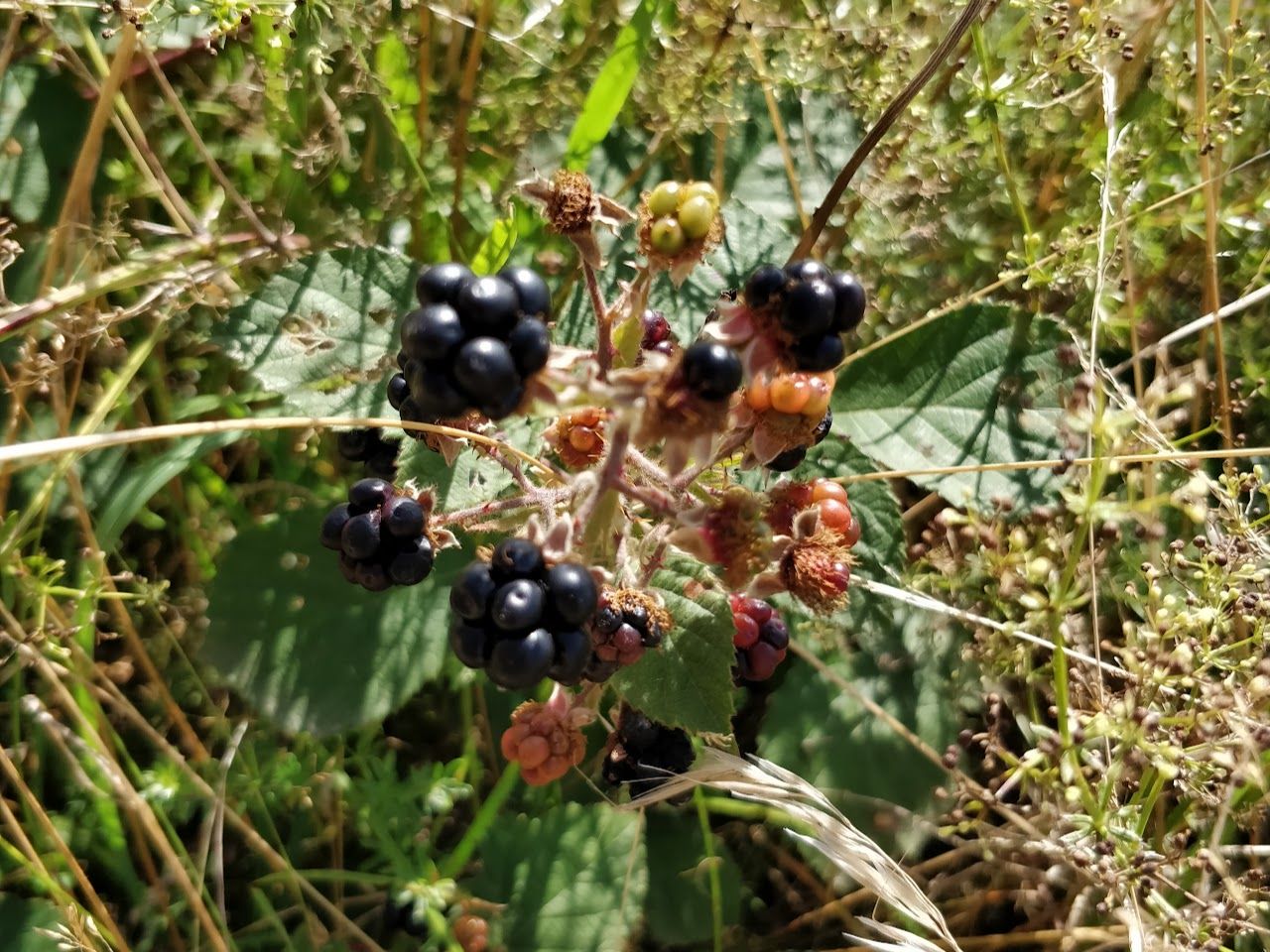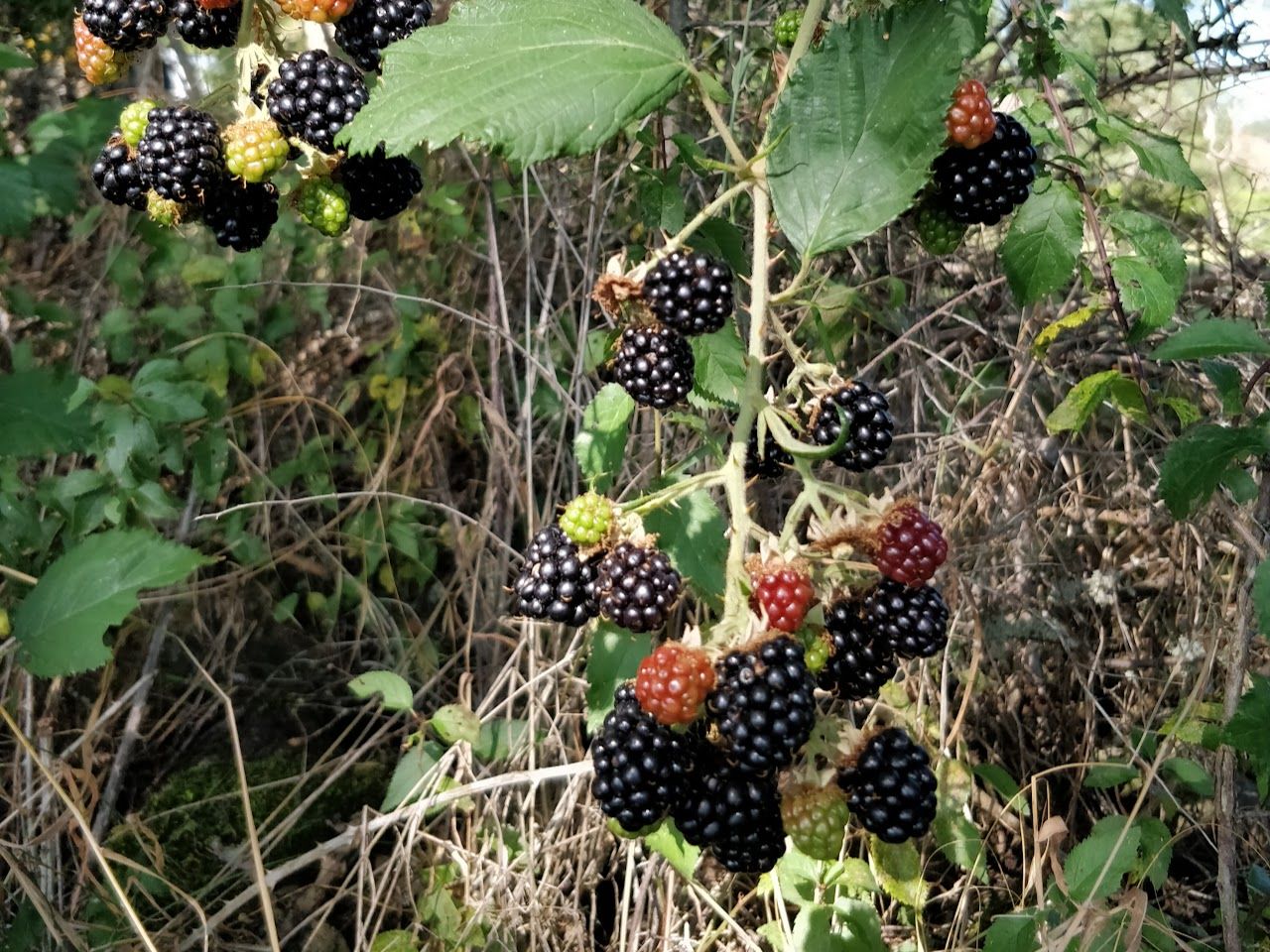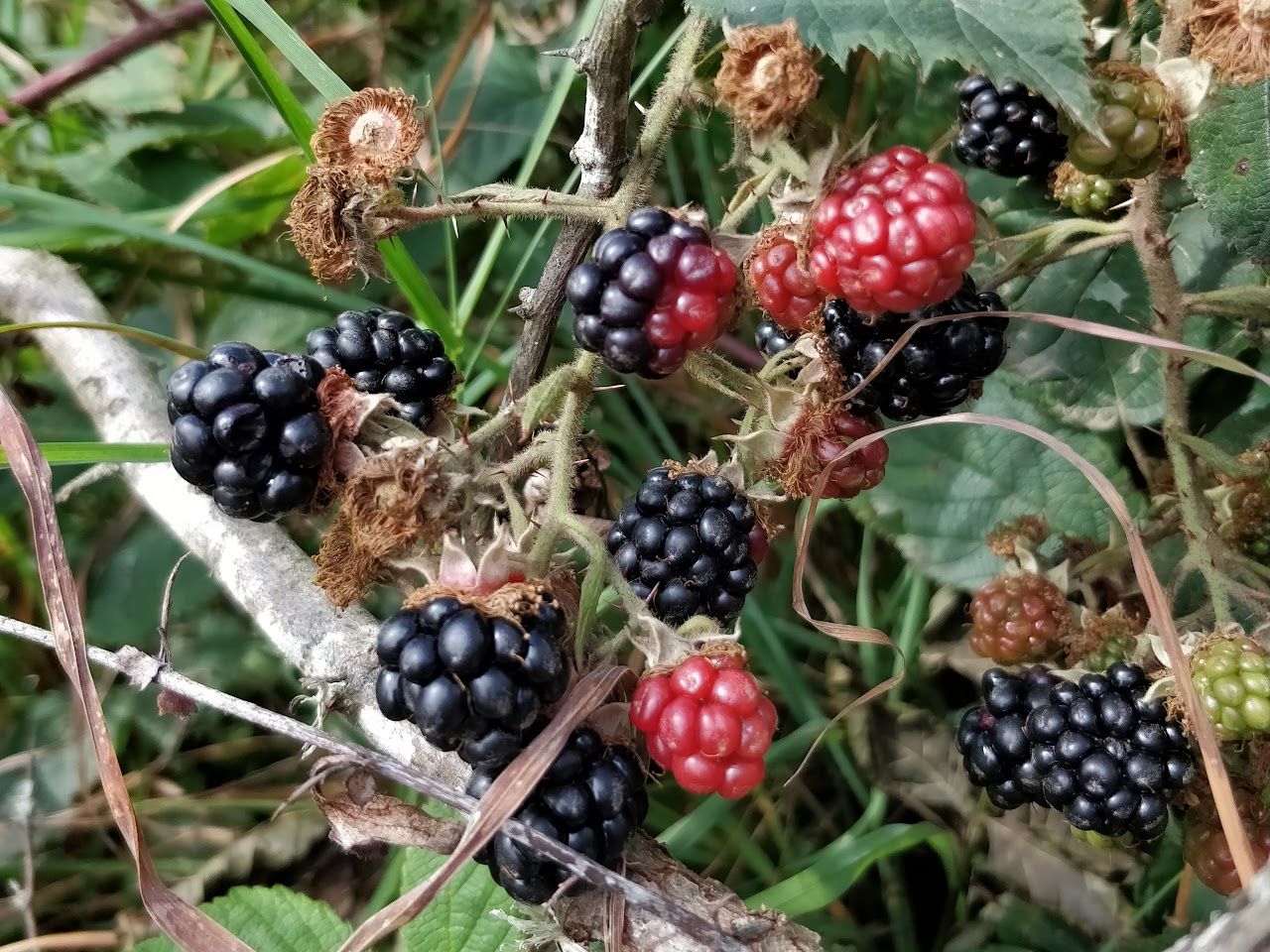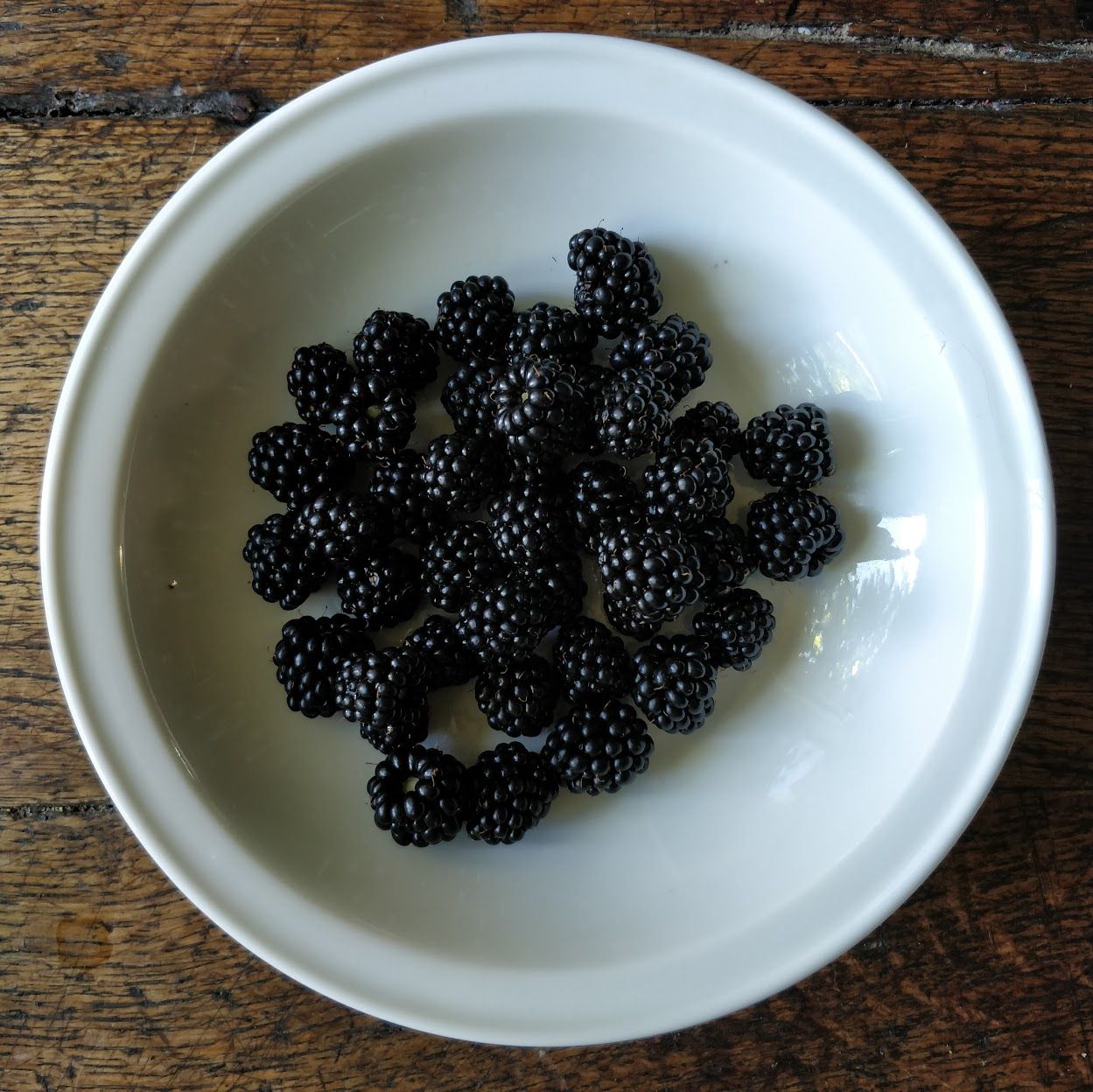Blackberry time
25/10/2021 ☼ Attention ☼ Fruit
Blackberry season ended at least a month ago.
Nearly all the trails around here are logging paths passing between coniferous plantations and dairy pasture. Where the paths break out into cleared land and/or have been churned up by monstrous continuous track machinery, there is almost always thick growth of blackberry bramble, which is an opportunistic invader.
The blackberry (like the raspberry) is a compound fruit, composed of many tiny fruits, each of which does not split open to eject the seed each contains. A large version of such an indehiscent fruit—such as an avocado—is known as a drupe; the many tiny versions that collectively make up each blackberry are drupelets.
Wild blackberry bushes vary widely in how they fruit. Some produce berries that have a small number of huge drupelets with big seed, while others produce berries with a large number of small drupelets with tiny seeds.


The latter, which look like cultivated blackberries, are vastly superior.
As the weather turned hot in September, the fruit began to change from bright red to purple. In this transformation, individual drupelets often are at first imperfectly synchronised with others on the same blackberry, creating a patchwork effect. At first, the change is slow, a gradual darkening which happens more quickly on south-facing slopes, slower on north-facing ones.

Then, after a particularly hot and bright spell with little rain, there was a sudden phase change. The brambles were still dotted with purple but they were swarmed with gleaming black fruit. No one else seemed to be picking them and they were too profuse for even the birds to wipe out.
Superabundance creates opportunity for discrimination. The perfectly ripe blackberry is intensely sweet but acid enough to not be tiresome. The problem: You have to handle lots of subpar blackberries to pick perfect blackberries.
Visuals alone are not enough to discern the perfectly ripe blackberry. The black and glossy blackberry may be—and often is—either still too firm, acid, and austere or too yielding and cloying. The perfect blackberry comes off the stem with ease and has a degree of give which cannot be described but is immediately detectable with gentle pressure. This embodied tacit knowledge is learnable after less than an hour, as long as you eat as you pick.

The ripe fruit that draws the eye and hand is always nestled just deep enough within a thorny matrix that getting spiked is practically unavoidable. The colour of blackberry juice is similar to that of blood.
After that hot, bright week came peak blackberry season: a week or more where every day’s walk easily yielded at least a kilogram of perfectly ripe blackberries. Double that number to account for those eaten while picking for purposes of quality control and ongoing training. In these quantities, even perfect blackberries begin to pall.
Fortunately, after the peak comes inevitable decline and fall.
Last week’s newsletter was about feeling stuck because of uncertainty, and how to get unstuck. Read it here.
I have a new tool for productive discomfort called idk. Check it out here.